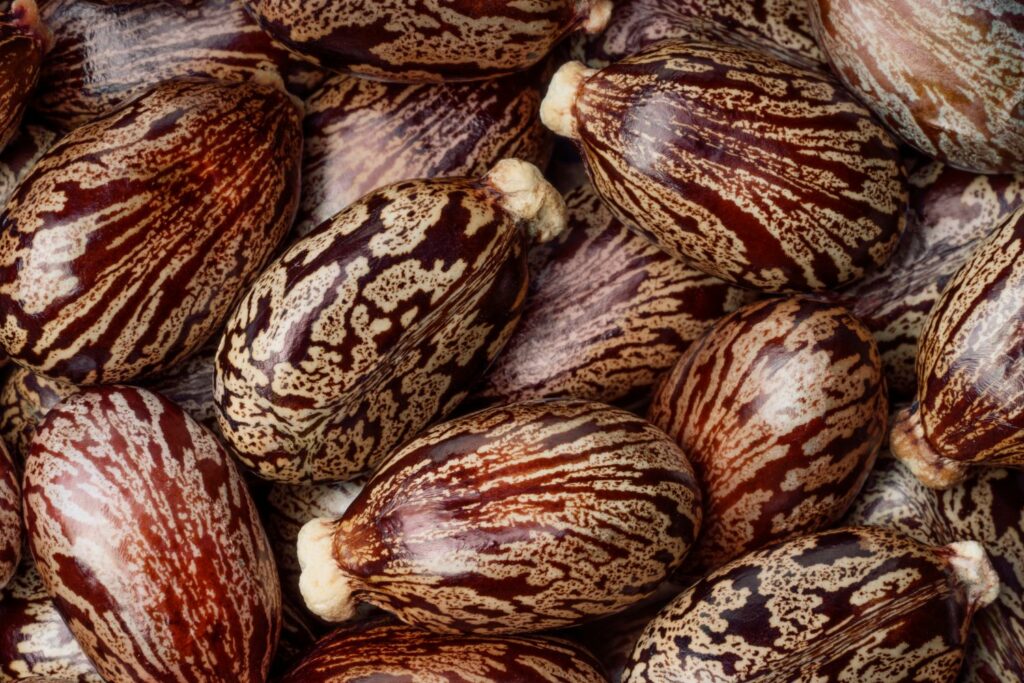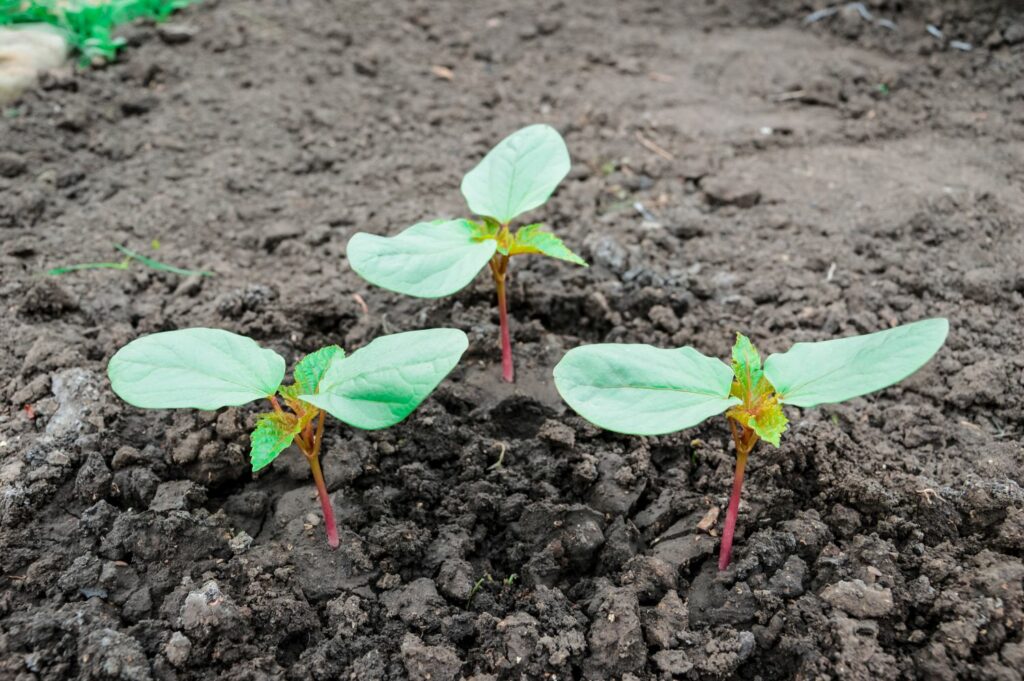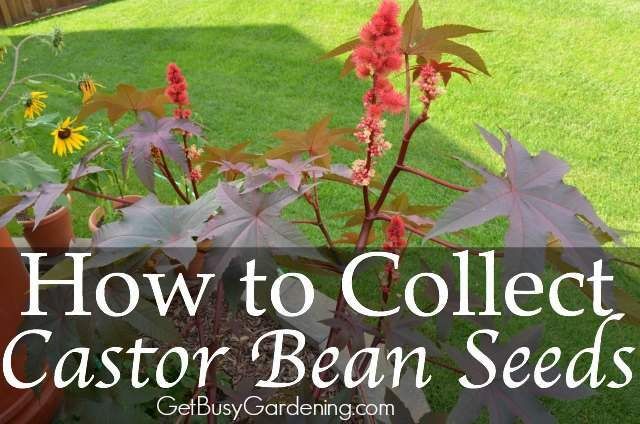Castor bean plants, also known as ricinus communis, are beautiful, tropical looking plants with large, lush leaves and red, pink or purple stems. However, all parts of the castor bean plant contain the toxin ricin, which makes it extremely poisonous to humans and animals. So if you decide to remove castor bean plants from your yard, extra care must be taken in the disposal process. Here are some safe methods for getting rid of castor bean plants.
Harvest the Plant Carefully
Before disposing of castor bean plants you’ll first need to remove them from the ground. Make sure to wear thick rubber gloves safety goggles and a particle mask when handling the plants to avoid contact with the toxins. Carefully dig up the entire plant including the roots and place in buckets or bags. Avoid touching the leaves or beans directly even with gloves on.
Once harvested, seal the plant waste in heavy garbage bags so it cannot blow away. Mark the bags clearly as toxic plants for disposal. Keep children and pets far away from the harvested plants.
Boiling Method
One disposal method is to boil the harvested castor bean plants to deactivate the ricin toxin. This should be done outdoors in a large pot on a grill or burner.
-
Add the bagged plants and enough water to submerge them completely.
-
Boil the plants for 30-45 minutes until fully cooked through.
-
Allow the pot to cool completely before disposal.
Boiling denatures the proteins in ricin rendering it inactive. However, handle the boiled water carefully and avoid inhaling any steam as it may contain trace amounts of the toxin.
Incineration Method
Another disposal technique is controlled incineration. This should only be done in a location away from people and houses, as burning the plants releases more toxin residue into the air.
-
Place the plants in a fire pit or barrel at least 3 feet deep.
-
Ignite the contents and allow to fully incinerate until only ash remains.
-
Bury the entire pit once cooled to contain any ash.
While incineration thoroughly destroys the toxins, it also disperses them if not contained carefully. Only attempt this method in remote areas on calm days.
Landfill Disposal
In some municipalities, sealed castor bean plant waste can be disposed of in designated landfills for hazardous materials.
-
Contact your local waste authority to check if toxic plant disposal is allowed.
-
Transport the double-bagged waste securely to the disposal site.
-
Clearly label as toxic plants for immediate landfill burial.
If standard landfills in your area accept household hazardous waste, this is the easiest and safest disposal method. The plants will be permanently buried away from any contact.
Prevent Re-growth
After disposing of castor bean plants, it’s important to take steps to prevent regrowth from any leftover seeds or roots.
-
Till the soil thoroughly to disrupt any remaining roots.
-
Apply herbicide to the area for several weeks to kill any new growths.
-
Monitor the area and quickly remove any seedlings.
Repeated weeding, herbicide and mulching will help ensure castor bean plants don’t return. Be persistent, as the seeds can lie dormant for years before sprouting.
Disposing of poisonous plants like castor beans takes extra diligence. But with the proper safety precautions, sealed containment and high-heat processing, the risks can be minimized. Always err on the side of caution when dealing with toxic vegetation.
Castor bean: origins and characteristics
In many places around the world, you can now find castor oil plants (Ricinus communis), which are also called castor beans. They are mostly found in temperate zones as well as tropical regions. These plants come from Northeast Africa and the Middle East, but they are now grown as ornamentals all over the world. Castor beans belong to the spurge family known as Euphorbiaceae. The name of the genus, Ricinus, comes from the Latin word for “tick,” which may mean that the plant’s full seeds look like certain types of ticks.

In areas prone to frost, castor oil plants typically grow as annuals. As long as they are grown in mild climates, these shrubs can grow to be 6 meters tall in just 3 to 4 months. In the tropics and subtropics, on the other hand, they grow as perennials that get woody over time and can grow up to 13 meters tall. Castor bean leaves are alternate, have long stalks and grow anywhere from 30 to 70cm long. The leaves are usually dark green, but some varieties have red or purple colouration. In most varieties, the petiole and veins are red. Castor leaves are also characteristically palmate with five to 11 lobes and a serrated leaf margin. Castor oil plants also form small stipules surrounding each stem.

Castor oil plants bloom between August and October. If started inside and with proper care, they can even bloom as early as June. They produce flower stalks 30 to 40cm long, topped with bracteate or paniculate inflorescences. Castor oil plant flowers are monoecious, meaning that each plant produces both female and male flowers. The red flowers that grow at the very top of the inflorescence are pretty, but they don’t last long. The yellow male flowers that come out of the bottom half of the inflorescence stay on the plant longer. Pollinated and fertilised flowers produce brown fruit capsules about 1. 5 to 2. 5cm large. These fruit capsules are covered with conspicuous, soft spines about 5mm long and resemble chestnuts. Castor bean fruit capsules ripen in September and each contain three bean-like seeds.

Are castor oil plants banned?
Despite being so poisonous, castor oil plants are not currently banned in the UK. But because children and adults have been poisoned sometimes, there are calls to make it a law that anyone who buys or sells castor bean plant parts, especially the seeds, must report it.

Castor Beans – The invasive plant with a deadly secret
FAQ
How to get rid of castor bean plants?
What to do with castor bean plants?
Can castor bean plants be composted?
Is it illegal to grow castor bean plants?
Can castor beans be composted?
The leaves have some but not nearly as much as the seeds. The plant should be composted with the municipal compost. The municipal composting process is monitored and the compost gets very hot. If there are any castor beans seeds soak them in bleach until they dissolve. One can call the Arb and ask the help desk what they do with castor bean plants.
How do you remove ricin from castor beans?
You can boil the castor bean seeds and the plant in a pot on a grill for 30 minutes or more to get rid of the ricin inside them. Once it’s cooled off, you can bury the dead plant in the ground. Make sure to clean anything that might have touched the plant or seeds with bleach afterward.
How do I get rid of castor bean seeds?
If there are any castor beans seeds soak them in bleach until they dissolve. One can call the Arb and ask the help desk what they do with castor bean plants. I am sorry I don’t have that information, I don’t work with anyone at the Arb.
Are castor beans poisonous?
The seeds of the castor bean have the most toxin. The leaves have some but not nearly as much as the seeds. The plant should be composted with the municipal compost. The municipal composting process is monitored and the compost gets very hot. If there are any castor beans seeds soak them in bleach until they dissolve.
Can you burn castor bean seeds?
If you burn the plant, keep in mind that castor bean seeds are known to germinate after a fire. You can boil the castor bean seeds and the plant in a pot on a grill for 30 minutes or more to get rid of the ricin inside them. Once it’s cooled off, you can bury the dead plant in the ground.
Are castor beans invasive?
Because of their invasive nature and the potential danger of their seeds, it’s important to keep castor bean plants from growing and spreading. If you see one growing in your yard, you should destroy it. Though it’s likely not common, castor beans can be processed to extract the ricin inside for malicious purposes.

